If you haven't seen Alexandr Nevsky , Sergei Eisenstein's film, I recommend you look for it and fill the gap without fear that it is a black and white film from 1938. Not only because this director's titles are still visually fascinating three quarters of a century later, but also because, After reading this article, you will surely want to see his masterful staging of the Battle of Lake Peipus.
Eisenstein had already shot Battleship Potemkin and October , two films that transcended their propaganda to become masterpieces, so that their revolutionary tone in politics paled next to the revolutionary in cinematography.
That and the fact that he had gone to Hollywood for a while made him a suspect for the Soviet authorities, -curiously, it was also for the Americans-, which did not prevent Stalin from convincing him to return to the USSR and take charge of the Alexandr Nevsky .
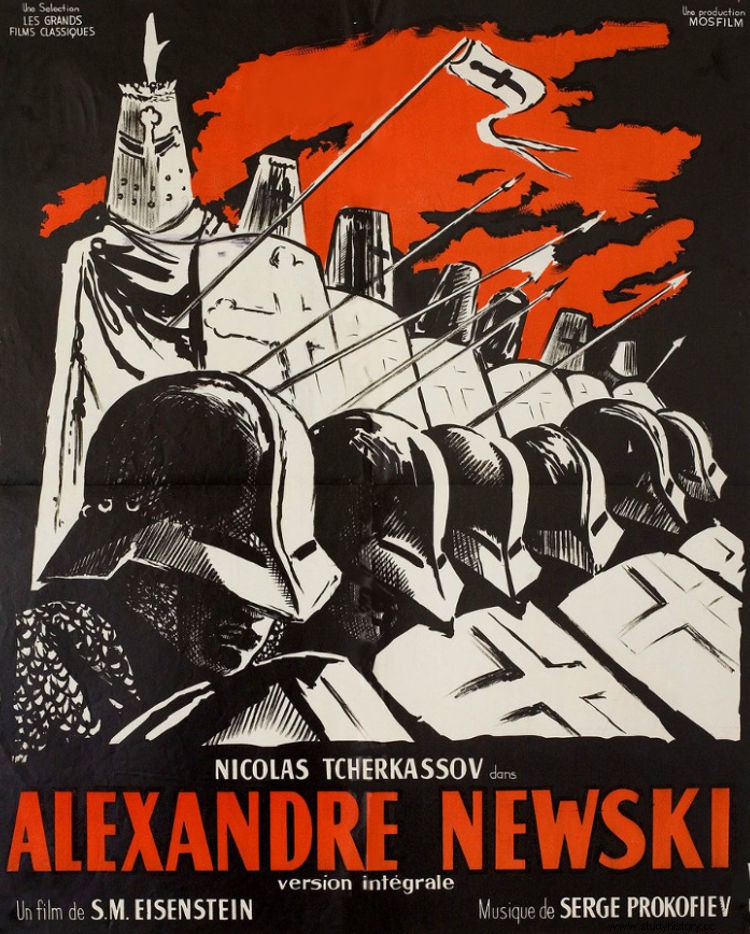
Eisenstein was imposed by some collaborators in the direction and the script so that he would not deviate ideologically and meet the shooting deadlines. As it was going to be a sound film -the first one he would make- special care was taken on that facet, with music by Prokofiev and a prestigious actor as the protagonist.
And given the international political context, in the midst of an escalation of tension with Nazi Germany, the final result constituted a clear allusion to said situation, as a kind of dissuasive warning against an invasion -the Molotov-Ribbentrop pact had not yet been signed - embodied in the scene of the aforementioned battle, in which it is inevitable to identify the Teutonic Knights with the Wehrmacht.
At this point, more than one will be wondering who exactly was Alexander Nevski, what happened in that conflict and who were the contenders. We have to go back to the 13th century, when the Republic of Novgorod, which emerged after breaking away from Kievan Rus', had become an important state that, in a rapid process of expansion, had brought many surrounding territories under its rule, setting up the base of what would later become Russia.
Novgorod was governed by a peculiar political system, in which the government was exercised by a prince but elected and assisted by a council that in local administrations was completed by the veches or popular assemblies.
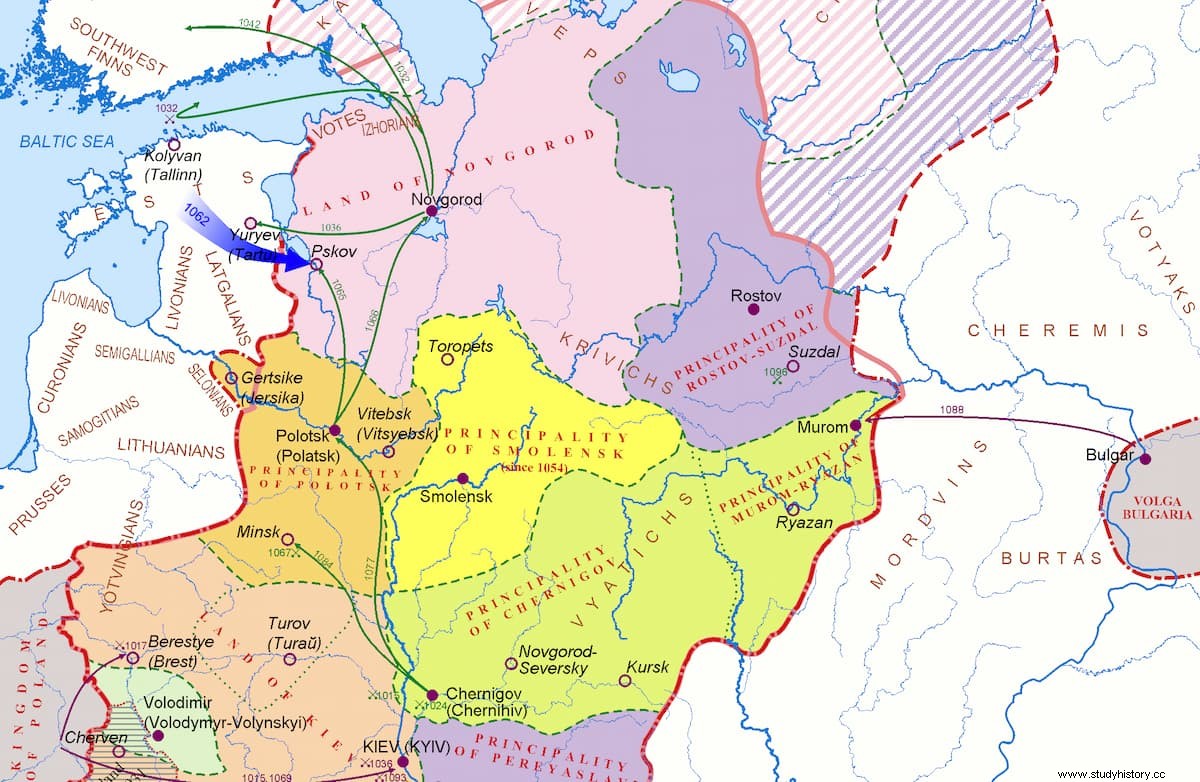
The republic was not without enemies. On the one hand, the Principality of Vladimir-Súzdal, successor to Kievan Rus, did not give up on reconquering its former territory. On the other hand, the Swedes, in a combination of defense of Catholicism and geostrategic interest (control of the Baltic trade routes), had been taking over various Finnish regions that Novgorod considered theirs, which led them to an almost continuous state of war. Likewise, the Mongols began an invasion of Central Asia, first under the command of Subotai and later led by Batu Khan, assistant and grandson of Genghis Khan respectively, leading to its maximum extent what became known as the Golden Horde.
Swedes and Mongols were putting the republic in trouble when a new danger arose:taking advantage of these circumstances, the Teutonic Order decided that the time had come to resume the crusade bull issued by Pope Celestine III in 1193, confirmed by two others of Gregory IX in 1233 and 1237. The original objective of that call was to combat the paganism that was still quite established among the Baltic and Slavic peoples, in the case of the Sorbians, Rugians, Finns, Estonians, Latvians, Livonians, Curonians, Prussians and Abrodites, which had meant a massacre of Christians in Estonia. The spearhead against them were the military orders, just like in the Holy Land and, in fact, their structure was based on that of the Temple.
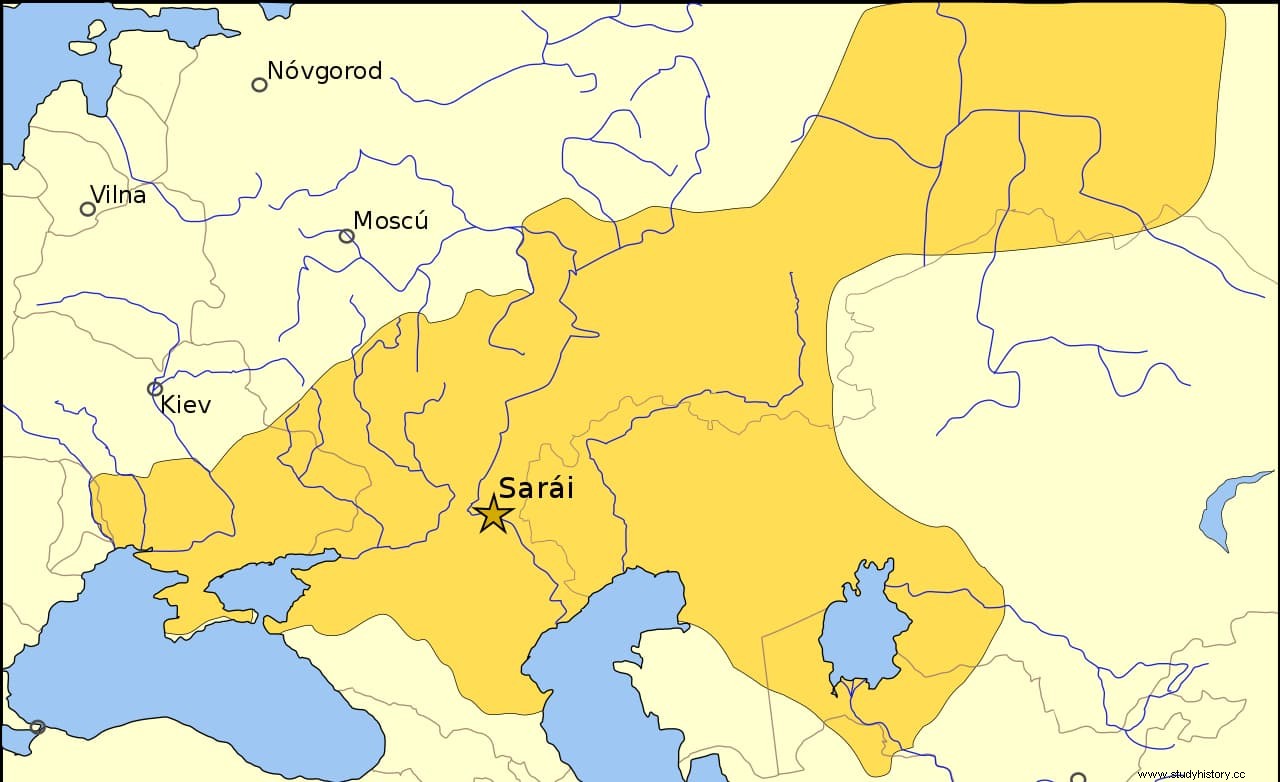
In fact, the Novgorod area was Christianized between the 9th and 11th centuries, but it had remained under the Orthodox doctrine, hence the Teutonic Catholics carried out an unstoppable campaign conquering Pskov, Izborsk and Koporye in the fall of 1240. They counted on the alliance of the Kingdom of Denmark, the Bishopric of Dorbat (a medieval principality that occupied part of present-day Estonia) and the Livonian Order (a branch of the Teutonic order made up of the knights of the order of the Livonian Brothers of the Sword who had managed to survive their catastrophic defeat to the Lithuanians at the Battle of Saule four years earlier).
This is where Alexander Nevsky stepped in. Born in Pereslavl-Zalessky in 1220, the son of Prince Yaroslav Vsevolodovich, he had grown up in Novgorod, the capital of the republic of the same name, and did not seem destined to reign as second in line. But his eldest son, Fyodor Yaroslavich, died in 1233, leaving him an open path. Three years later he had to assume the government and he did so under difficult circumstances, with the shadow of the Swedes falling over the country. Alexander defeated them in 1240 at the Battle of the Neva, thus preventing the invasion and earning the nickname Nevsky .
At least that is what the legend says, since historians have serious doubts because at that time there is no record of a Swedish campaign and also no non-Russian source mentions the war. But it's the same. Nevsky was only nineteen years old and had already become the national hero that the Russians needed to face the Teutonic attack, that is why the people of Novgorod demanded his return from exile in Pereslavi, to which he had had to go after colliding with the power of some boyars who had not been impressed by the victory of the young knyaz (prince).
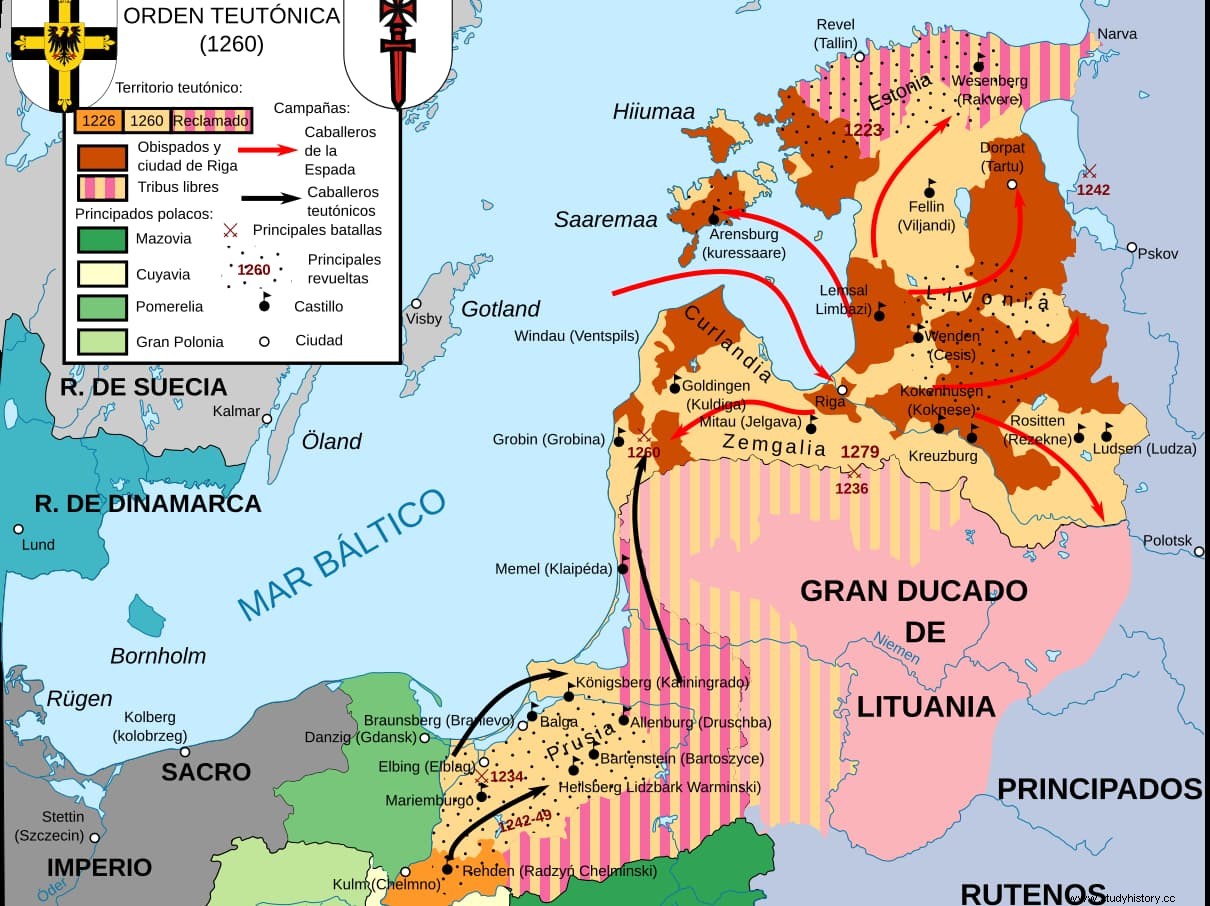
Nevski returned, took command of the army and throughout 1241 he reconquered the cities lost at the hands of the Crusaders. Thus came the spring of 1242, in which the troops of Prince-Bishop Hermann of Dorpat defeated a Russian detachment advancing on the positions held by Nevsky. It was clear that a big clash was coming and that it could be decisive, so the knyaz made sure to choose the terrain that suited him best:instead of going against them, he retreated to Lake Peipus, a large body of water of 3,555 square kilometers (the fifth largest lake in Europe), which is located on the current border between Estonia and Russia. It has an average depth of seven meters and at that time of year it was frozen.
There Nevsky placed his own, superior in number but not in quality; According to estimates, he doubled the number of his enemies, numbering some five thousand warriors. Now, half of them were part of the Novgorod militia, while another thousand and a half were Finno-Ugric tribal auxiliaries and about six hundred Mongol horse archers (ceded by the Khan when Alexander agreed to submit to his vassalage), being the best of that army the druzhinas (personal hosts) contributed by him and Prince Andrei, his brother, with about a thousand men-at-arms.
In front of them, the crusaders presented approximately two thousand six hundred combatants, a considerably smaller number. However, about half were heavy cavalry (Danish and German plus a hundred Teutonic Knights), i.e. milites professionals, to which were added a thousand Estonian infantrymen.
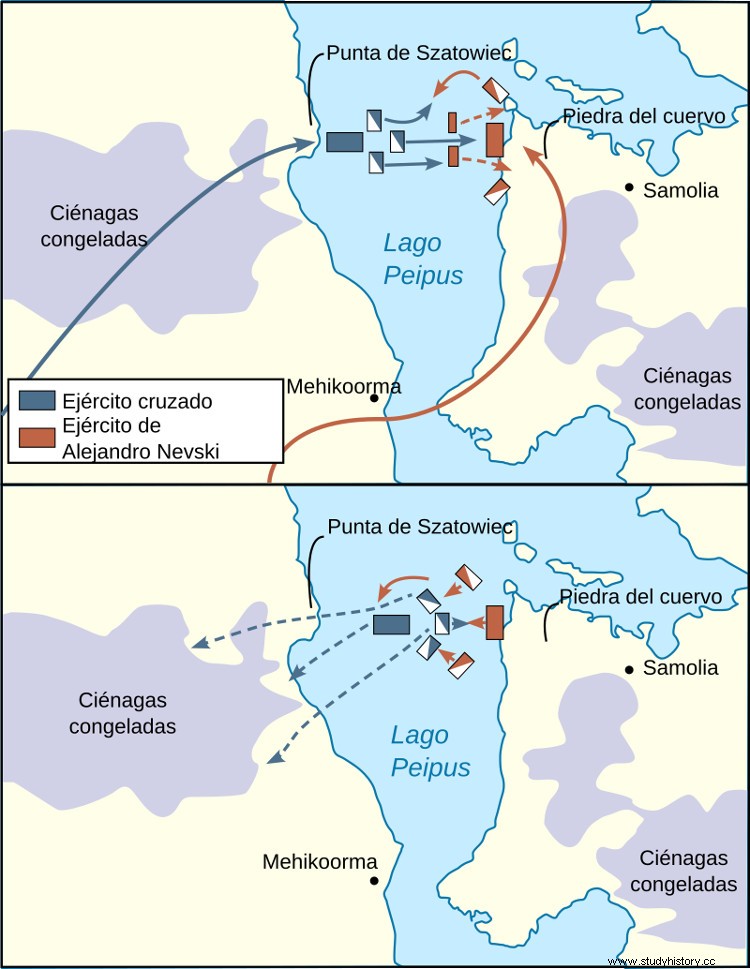
The Russians took up position at a point called Raven's Rock, while the Teutons galloped across the frozen lake, charging them in a wedge. The Novgorod militias, who formed a shield wall in the front line with rear support from the Druzhinas , managed to resist the onslaught and both sides merged in a chaos of blood, sweat, snow and iron.
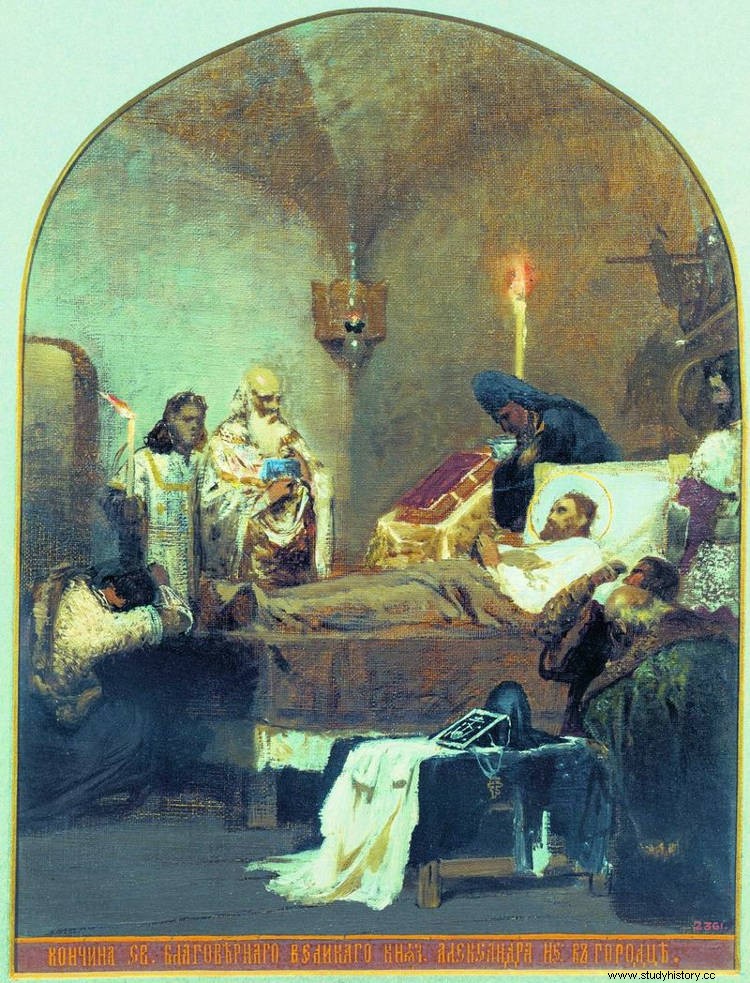
For a couple of hours a close battle followed in which the Russians had achieved their goal of nullifying the enormous shock force of the adversary, now taking advantage of their numerical superiority to tire it out and encircle it on the flanks. In addition, they had the advantage that fighting on the slippery ice made their light equipment more comfortable.
Little by little, the crusaders gave in to fatigue and, seeing themselves pocketed, tried to withdraw in order. It was then that Nevsky ordered his cavalry into action, which, firing an unexpected deluge of arrows, panicked their ranks and broke their formation. The dramatic save yourself who can culminated in the breaking of the ice sheet that also covered the surrounding swamps. The Crusaders, with their heavy armor, sank hopelessly into the water and mud, paying dearly for the mistake of not having taken into account that it was already spring and the frozen surface was more fragile. However, historians consider that this ending does not appear in any source and, apparently, it was Eisenstein who introduced it in his film, perhaps based on some legend.
Because, obviously, and despite the fact that today it is also believed that the number of casualties was actually very low, the Battle of Lake Peipus went down in history as an epic episode in the formation of Russia, hence the timeliness of the film's premiere in 1938 (although as a result of the Molotov-Ribbentrop pact it was withdrawn from circulation). In fact, miracles began to be attributed to Nevski and consequently he would be canonized in 1547.
It is curious to note that after the battle he was lucid enough to understand that he could not repeat a great victory like that against the Mongols, so he renewed his vassalage to prevent an invasion. He was precisely in Gorodets returning from a trip to Sarai, the capital of the Golden Horde, when he fell ill; aware of the gravity, he took the monastic robes changing his name to Alexis and expired. It was in 1263.
